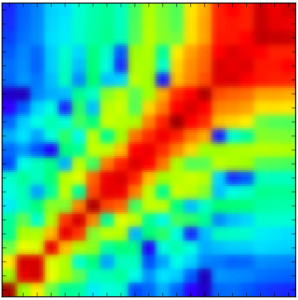Robert A. Bell, Mike C. Payne and Arash A. Mostofi, Improving the conductance of carbon nanotube networks through resonant momentum exchange, Phys. Rev. B 89, 245426 (2014) (PDF, SUPPLEMENTARY)
Individual single-walled carbon nanotubes (CNTs) possess remarkable electron transport properties and many applications have been proposed since their discovery. To have a significant technological impact, however, the properties of single CNTs must be scalable to the level of devices and mass production. One approach is to use the CNTs in so-called ‘bulk form’, such as wires and mats that are fabricated as a complex network of many individual CNTs. These systems have attracted considerable interest recently. Their conductance, however, is orders of magnitude lower than the theoretical maximum achievable on the basis of single CNTs and is believed to be largely limited by the slow tunnelling of electrons between CNTs in the network.
Rob’s theoretical analysis of inter-tube tunnelling between adjacent CNTs identifies a new mechanism to improve the electronic conductance of CNT networks by an order of magnitude. Whilst it has been known theoretically for some time that inter-tube conductance between CNTs of different chirality is strongly suppressed, how this result impacts real CNT networks has not been clear. Previous theoretical and computational approaches have focussed largely on conductance between terminating ends of CNTs and/or considered tunnelling between CNTs of the same chirality. These studies are, therefore, not representative of realistic networks that can consist of relatively well-aligned CNTs in which side-wall tunnelling is significant and in which there are a wide range of chiralities.
Using analytical theory based on scattering theory, validated by numerical tight-binding simulations, Rob has shown unequivocally that significant enhancements of inter-tube conductance can arise from relatively weak interactions with the surrounding environment. The origin of the enhancement is that these interactions enable momentum-conserving tunnelling to occur by accepting any momentum difference between the initial and final states. The improvement in inter-tube conductance is very general and applies to metallic as well as doped semiconductor CNT networks.
A key point is that the interaction with the environment need only be weak, therefore, it can be effected without chemical bonding. A number of possibilities for the experimental realisation and control of such conductance-enhancing interactions are suggested and our results highlight the crucial importance of considering the effect of the environment when studying nano-scale devices.
This work is part of Rob Bell’s PhD.
